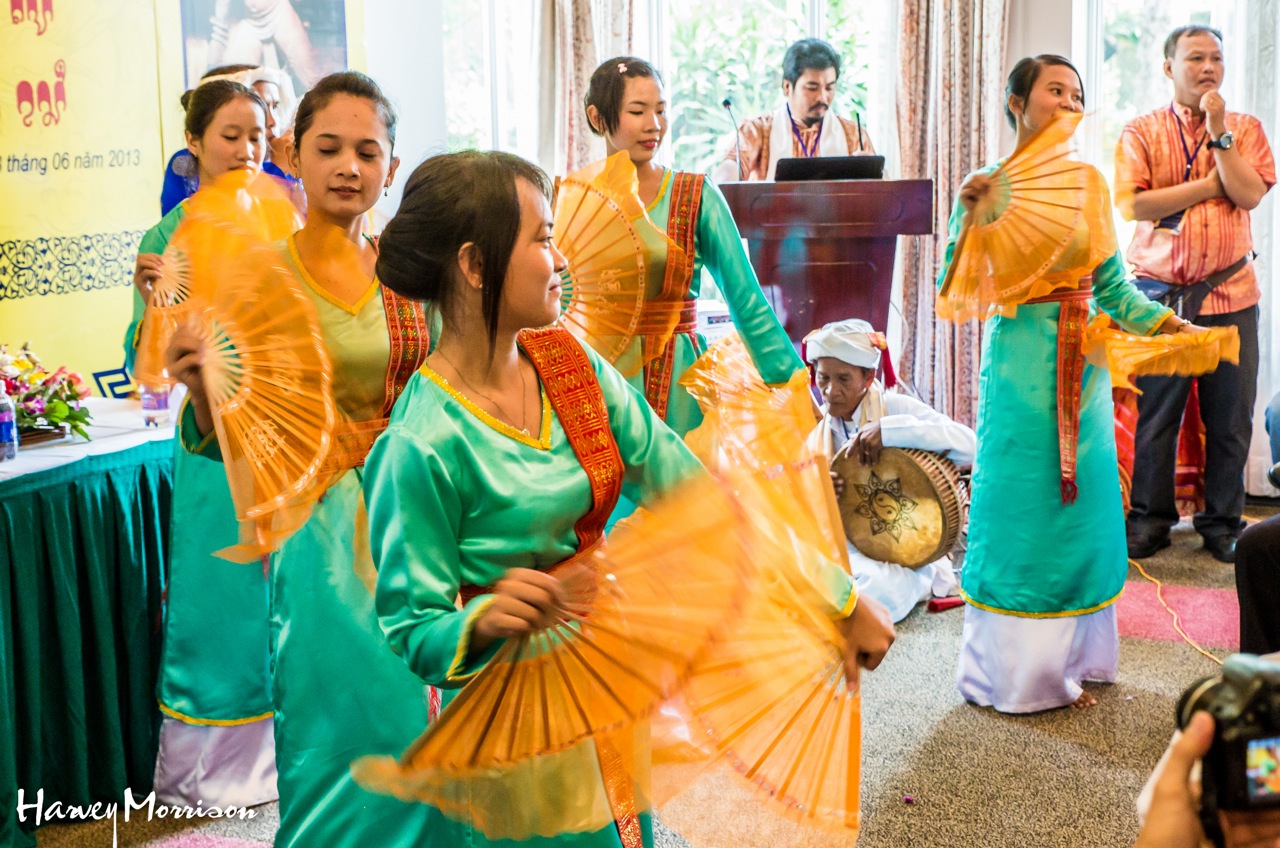I was fortunate enough to be invited to the first-ever conference held by the UNESCO Center for Research and Conservation of the Cham culture in Ho Chi Minh City last week.
I was surprised to be chatting with interested parties from all over the world who converged on the city to celebrate and take part in keeping alive this ancient group of people who have survived against all odds.
In particular one dignitary whose presence above all gives a face to the Cham people – Che Linh. The singer who currently resides in Toronto, Canada was a proud man taking his place among the other Cham dignitaries who discussed in great lengths the way forward for the minority people who reside in Vietnam and in particular the traditional and modern songs and dance.
The thing that has always struck me about the Cham culture apart from the beautiful red sandstone temples and monuments to a past time in places like Phan Rang, Da Nang City, Nha Trang and Phan Thiet, is the interest it garners in those with no Cham background.
One of those was Japanese professor Shine Toshihiko, who speaks fluent Cham and Vietnamese and took part in the debate at the all-day symposium on the preservation and development of Cham music in District 10.
He represents Japanese universities and is co-director of Vietnam National University – Hanoi and Kyoto University Collaboration Office.
Toshihiko first became interested in the Cham culture thanks to a famous professor of Champa history at Hiroshima University, the late Professor Sugimoto Naojiro.
“I knew him when I was a high school student. Thanks to his inspiration, at university in central Tokyo I seriously studied Champa’s history. In my fourth year at university I traveled to see all the Cham ruins in Vietnam. Two years later I moved to Vietnam for good as a Japanese language lecturer at the University of Social Sciences and Humanities and Vietnam National University –Ho Chi Minh City, and my career in Vietnam started. Now my life work is reading Cham royal archives and study on socio-economic history of Champa from the 17th to 19th century,” he says.
According to Toshihiko, in the beginning of Islamization in Southeast Asia, Islam followers came from Persia and the Malay aristocrats originated from Persia (and some came from Champa). However, when the Hadramies (Arabs from Hadramawt region) came to Malay, they changed the Islam teaching from Persian style (Shia School) to Hadramies style (Sunni School). The Islam followers in Cambodia and Indonesia also were influenced by the Hadramies. Only the Cham in Vietnam still keep the early style of Islam in Southeast Asia.
The conclusion of the conference was that there should be separate modern musicians, dancers, directors and religious musicians and dancers. The Cham officials agreed to develop so-called modern Cham’s secular music and dance, and keep traditional Cham’s religious music and dance which were performed by some attractive young Cham girls during the conference.
Another interested foreigner was Billy Noseworthy, 27, from Wisconsin-Madison University who is also well-versed in the Cham language and is in Vietnam to work on his university dissertation.
He admits that he was completely oblivious to the existence of the Cham civilization and the Cham culture before 2006.
However, listening to Professor of Asian Religions at Swarthmore College, Steve Hopkins, changed all that.
“Professor Hopkins is a phenomenal story teller. His recounting of portions of the Ramayana at My Son is one of my earliest if not the earliest encounter I had with the Cham culture. My first formal collegiate level study of Vietnam was a year later in the spring of 2007 when I took a course in Vietnamese history in preparation for my return visit to Vietnam, as I had visited here in 2006 when I was 20. I am here to do my dissertation which is on extensive reassessment of the history of the borderlands between Vietnam and Cambodia and the place of the Cham in the region,” he says.
There are 162,000 Cham people still residing in Vietnam, 217,000 in Cambodia, 10,000 in Malaysia and 4,000 in Thailand. There are even 3,000 in the US and 1,000 in France. Cham architecture and statues were inspired by religion, and flourished since the fourth century and ended along with the fall of the Cham Kingdom in the 15th century.
There are priceless Cham artifacts with some individual pieces literally worth millions of dollars in the Vietnam History Museum in District 1 as interest in the ancient culture continues unabated. You have to say it is looking in good shape with poster boy Linh an important figurehead in its modern-day resurgence.





















































